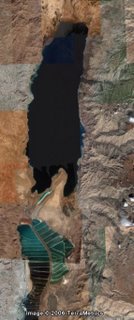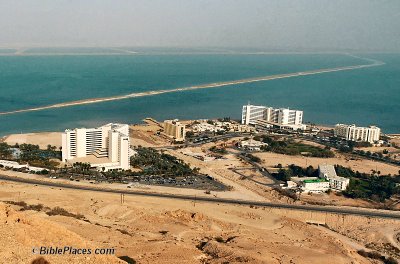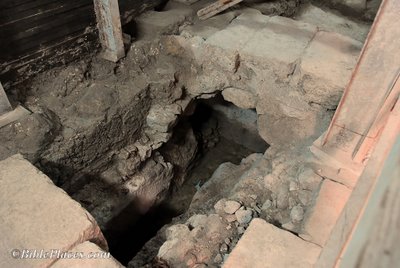 Yes, it’s true – the Dead Sea’s falling threatens the environment and the roads, and the Dead Sea’s rising threatens the hotels. How one sea can be both rising and falling at the same time is best explained this way: there are two Dead Seas.
Yes, it’s true – the Dead Sea’s falling threatens the environment and the roads, and the Dead Sea’s rising threatens the hotels. How one sea can be both rising and falling at the same time is best explained this way: there are two Dead Seas.
Until modern times, the Dead Sea was a 50-mile (78-km) long body of water, with a piece of land sticking out from the eastern side. Because it apparently looked like a tongue, it was called that in Hebrew (lashon) and Arabic (lisan).
With the damming of the Sea of Galilee and the use of water that formerly flowed down the Jordan River into the Dead Sea, the level of the Dead Sea dropped in the 20th century until the tongue reached all the way across the lake. The southern end is shallow and would have completed dried up if not for the channeling of water by the company that extracts minerals from the Dead Sea waters. So the southern end today is essentially an artificial evaporation basin, connected to the northern end only by manmade channels.
Today the northern end continues to drop because the limited inflow of water from the Jordan River. The southern end, however, is rising, because of the activities related to the mining of minerals. The rise of approximately 8 inches a year (20 cm) is now threatening the tourist resort of Ein Bokek and its many hotels.
 Hotels of Ein BokekAccording to Haaretz, the Supreme Court of Israel has ordered the government to come up with a plan to solve this problem.
Hotels of Ein BokekAccording to Haaretz, the Supreme Court of Israel has ordered the government to come up with a plan to solve this problem.
At present, there are three options: building a new lagoon with walls that will prevent flooding of the reservoirs, removing the extra salt from the bottom of the reservoirs or demolishing all hotels on the Dead Sea shore and rebuilding them in alternative locations.
In the meantime, expect the Dead Sea to continue to rise and fall simultaneously.

